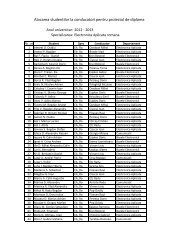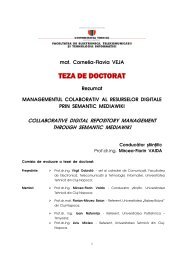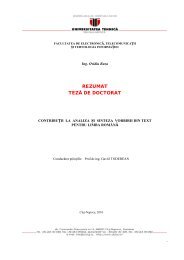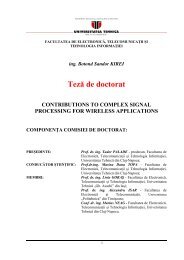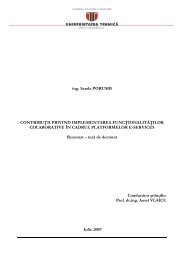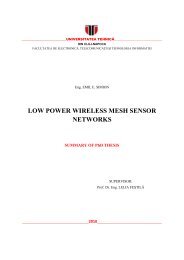SUMMARY PhD. THESIS
SUMMARY PhD. THESIS
SUMMARY PhD. THESIS
Create successful ePaper yourself
Turn your PDF publications into a flip-book with our unique Google optimized e-Paper software.
Contributions ....................................................................................................... Error! Bookmark not defined.<br />
6. Conclusion ........................................................................................................... Error! Bookmark not defined.<br />
7. Bibliography ........................................................................................................ Error! Bookmark not defined.<br />
Appendix ................................................................................................................. Error! Bookmark not defined.<br />
Appendix ................................................................................................................. Error! Bookmark not defined.<br />
Appendix ................................................................................................................. Error! Bookmark not defined.<br />
Appendix ................................................................................................................. Error! Bookmark not defined.<br />
Appendix ................................................................................................................. Error! Bookmark not defined.<br />
General Subject of the Thesis<br />
In the last decade, visual representations (images or video sequences) have been present in almost all<br />
aspects of everyday life, making multimedia information ubiquitous. Services and products like digital<br />
photography, digital television, DVDs and BlueRays, the World Wide Web, videoconferencing, virtual<br />
collaboration and others, are all based to a great extent on the use of such visual content.<br />
Currently, one can witness, under the momentum of the theoretical and technological developments<br />
characteristic to the „digital era”, a wide process of „re-invention” of the video systems and services<br />
formerly based on the use of analogue technology. Likewise, the capabilities available in video<br />
rendering devices (screens that allow high contrast ratios, low power consumption and various shapes,<br />
sizes and spatial resolutions), the high throughput processing and transmitting networks (in the order of<br />
Mbytes per second) and the opportunities offered by the visual information acquisition systems that<br />
allow high quality images and videos (high resolution, colour depth and time sampling of more than<br />
160 frames per second) and the „boom” in applications and use case scenarios have all contributed in<br />
the last decade to an unprecedented growth and development of systems that make use of static (images<br />
and photos) and dynamic (videos and animations) visual information. In order to cope with these<br />
overwhelming requests of new product „invention” and technological breakthrough that will surpass the<br />
performances of current devices, services and technologies, one can observe a certain segmentation and<br />
specialisation adapted to different types of applications and user groups, as well as an import and<br />
mixture of techniques, methods, and technologies stemming from various fields (statistics, chemistry,<br />
physics, biology) that were summoned to help. However, one of the most important/revolutionary<br />
aspects of the past few years is the interest in adding the extra depth dimension to the „classic”<br />
brightness information that is captured from the scene.<br />
This thesis aims at bringing personal and original contributions to the challenges that are being currently<br />
pursued worldwide within the general field of 2D & 3D vision systems. The research, according to the<br />
structure of the presented work, focused on the following:<br />
a. Acquiring indepth knowledge in the field of 2D & 3D vision systems engineering: from photo to<br />
the latest innovations in imaging acquisition, processing, transport and rendering, including 3D.<br />
b. Studying, analysing and comparing emerging methods and paradigms for the coding and<br />
compression of the video signal – namely distributed video coding, all in the framework of the<br />
increasing number of mobile video-aware devices and wireless transmissions.<br />
c. Implementing and proposing new algorithms for acquiring/generating/extracting depth<br />
information from defocus and light polarisation, together with brightness information in order to<br />
3





